On May 30, “A World of Looms: Weaving Technology and Textile Arts in China and Beyond” exhibition opened at China National Silk Museum.

Indonesia has a diverse variety of textiles, showing its history of migration and trade. The “Insular southeast Asia” section of the exhibition showcases the looms and skills from Indonesia. That night, the “Silk Road Night” series of events “Indonesian Evening” also opened at Fashion Gallery.

The “Indonesian Evening” is sponsored by China National Silk Museum, directed by the Zhejiang Association for Friendship with Foreign countries and the Zhejiang Association for Cultural and artistic Exchange Promotion, and organized by the Hangzhou City Brand Promotion Association, the Hangzhou Tourism Image Promotion Center, and the Hangzhou Opera and Dance Theatre. Also, it was supported by the Consulate General of Indonesia in Shanghai, Donghua University and Xiaofeng Bookstore.
A series of wonderful lectures led guests into the unique customs of Indonesia, enjoying its long history of textile culture. The Consul General of Indonesia in Shanghai, Ning Qiaoen, brought a lecture entitled “Indonesian Cultural Diversity Overview” to show Indonesia's diversity culture, beautiful tropical scenery and the national spirit of love for freedom.
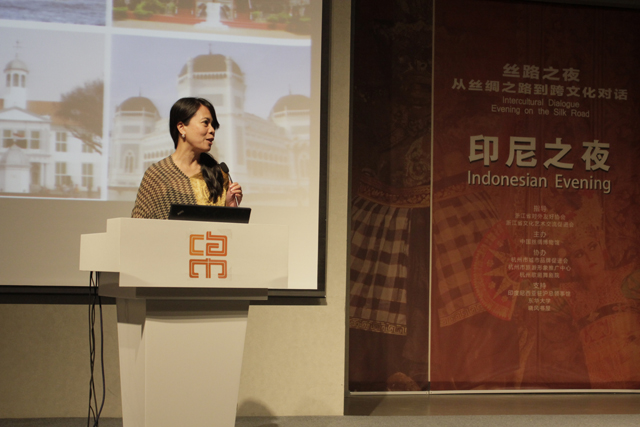
Siti Mariah Waworuntu, the secretary general of ASEAN traditional Textiles Association, brought a lecture entitled “The Impact of Chinese Culture on Traditional Textiles in Indonesia” with displaying in various textile images. It reflects Chinese weaving and artistic style reaching many islands in Indonesia by sea route and leaving a mark of Chinese culture on Indonesian textiles.
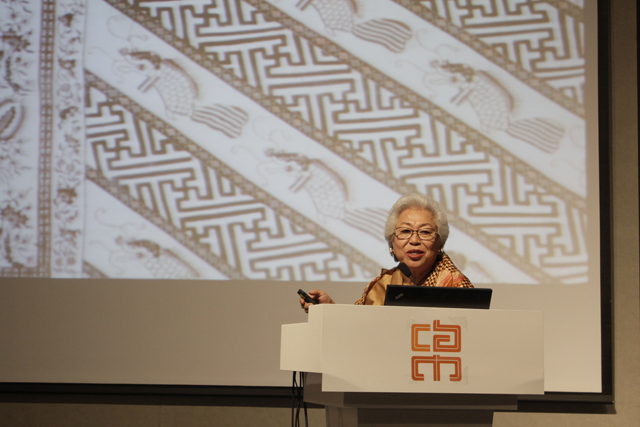
Sandra Sardjono, the member of the Textile Arts Committee at the San Francisco Museum of Modern Art, gave a lecture on “Indonesia and the Maritime Silk Road”. From the 5th century to the 16th century, a series of powerful Hindu-Buddhist kingdoms emerged in Sumatra and Java because of Indonesia’s important geographical position on the maritime silk road. The cultural imprint of these countries can also be found on the reliefs and sculptures in many local buildings, carrying the social appreciation of the foreign patterns at that time.
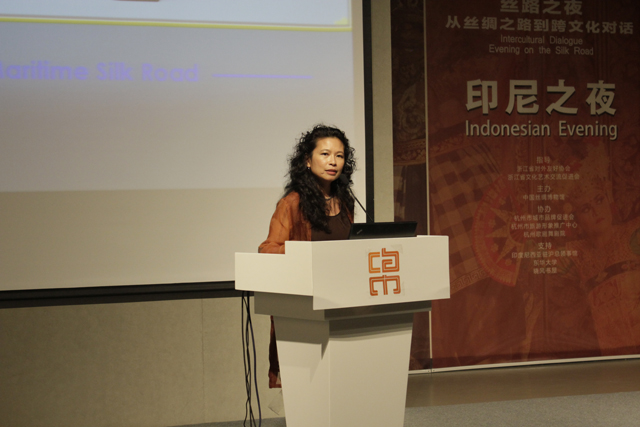
Between the lectures, the unique Indonesian music and dance also brought a different experience to the guests. Xizi National Orchestra from Hangzhou Opera and Dance Theatre, uses traditional Chinese instruments to perform traditional Indonesian music, “Rayuan Pulau Kelapa” and “Solo River”.
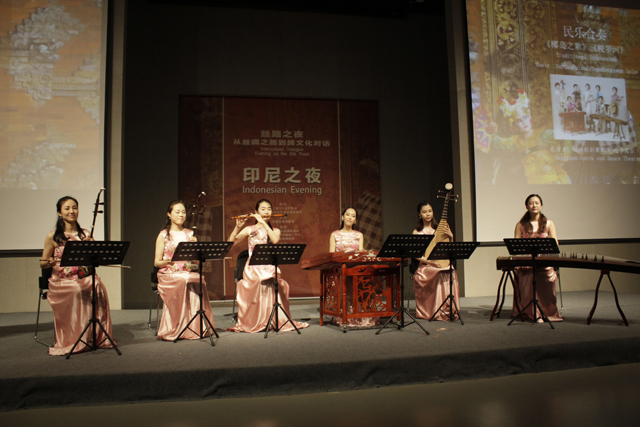
In Bali, famous scenic resort in Indonesia, there is a very famous classical play, "Calon Arang," which represents the famous local tale - the life of witch Calon Arang. This “Indonesian Evening” invited representatives of Indonesian students in China to bring the selected passage of "Calon Arang" to the guests, vividly interpreting the beautiful legend of Bali.
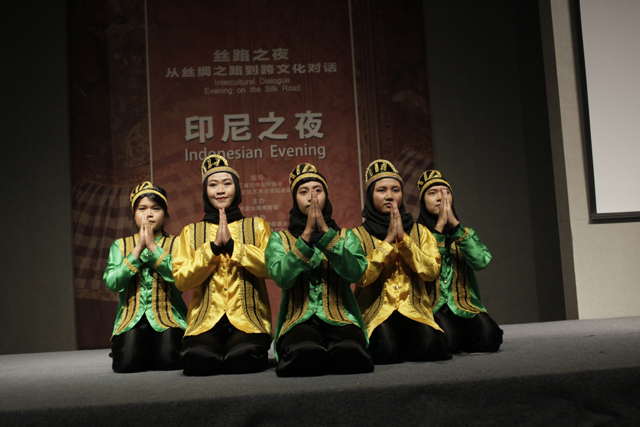
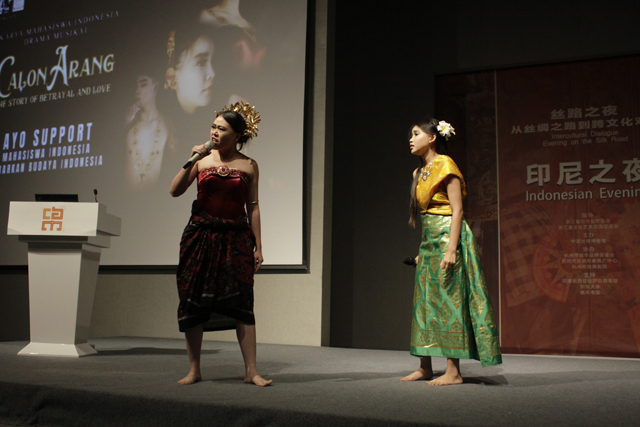
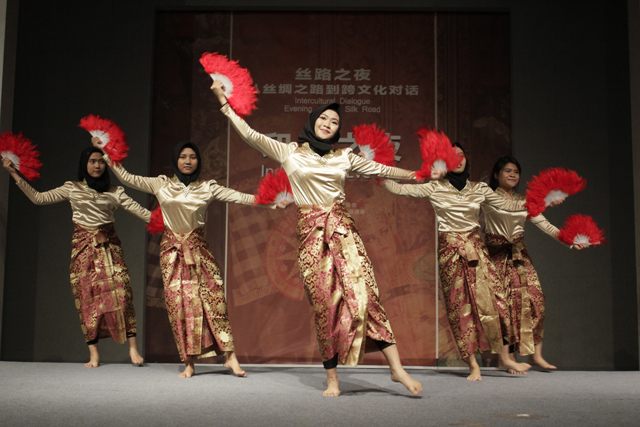
Chen Tao and Zhu Jiale, two young singers from Hangzhou Opera and Dance Theatre, sang the well-known Indonesian songs “Sweet Honey” and “Ayo Mom”.
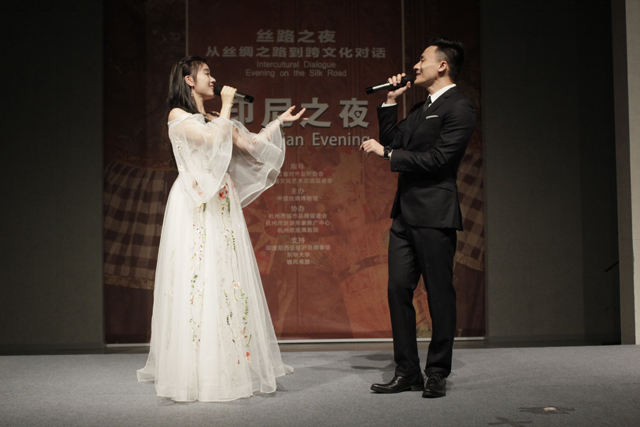
Indonesian students from Donghua University brought in the dance "Valeo", meaning efforts to become stronger. This dance is a fusion of modern dance and traditional Indonesian dance. It showed Bali culture, Java culture and Aceh culture in the traditional part of this dance.
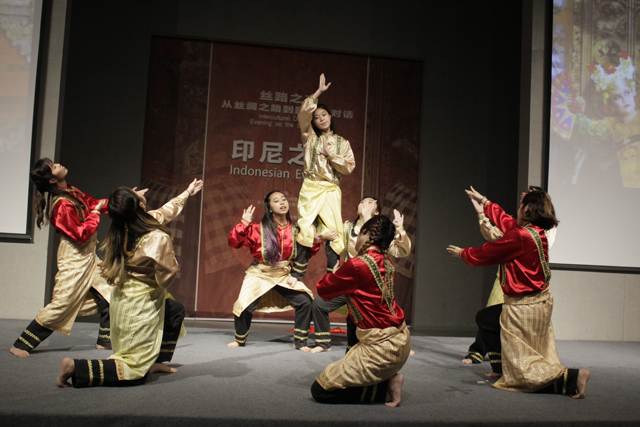
That evening, the ASEAN traditional Textiles Association and the Silk Road Association signed a memorandum of understanding. The functions of the traditional Textile Arts Association of Southeast Asia and the International Silk Road Research Association cover the research and protection of Silk Road culture and textiles. In the future, the both associations will jointly study and share cultural heritage resources and raise the level of research in the field of the Maritime Silk Road.

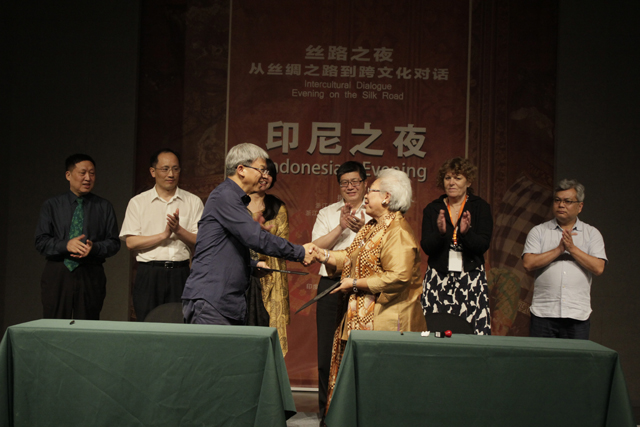
At the end of the event, the curator, Zhao Feng, made a wonderful summary speech. He expressed his sincere thanks to all the organizations and individuals around the world who helped and supported “A World of Looms: Weaving Technology and Textile Arts in China and Beyond” exhibition. He also expressed that China National Silk Museum will achieve its vision from the Silk Road to intercultural dialogue through better exhibitions and activities.
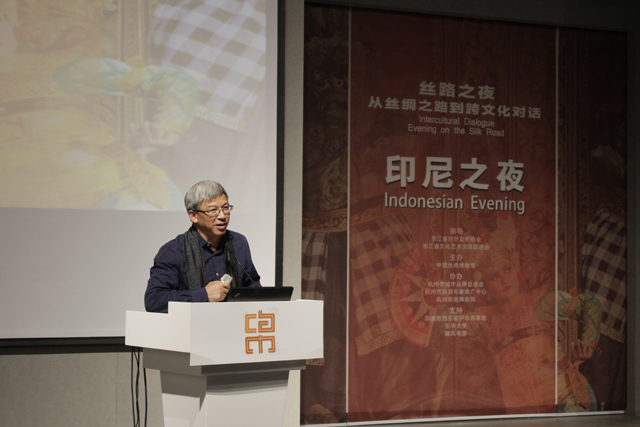
 Pay attention to us
×
Pay attention to us
×